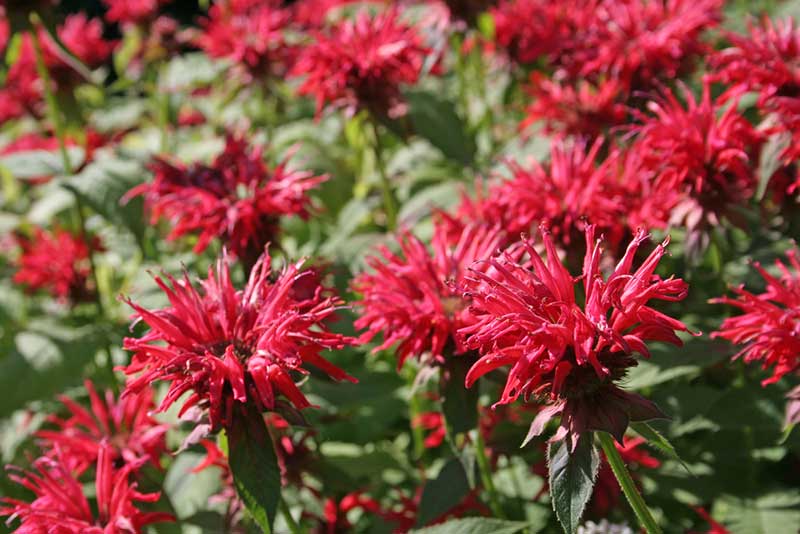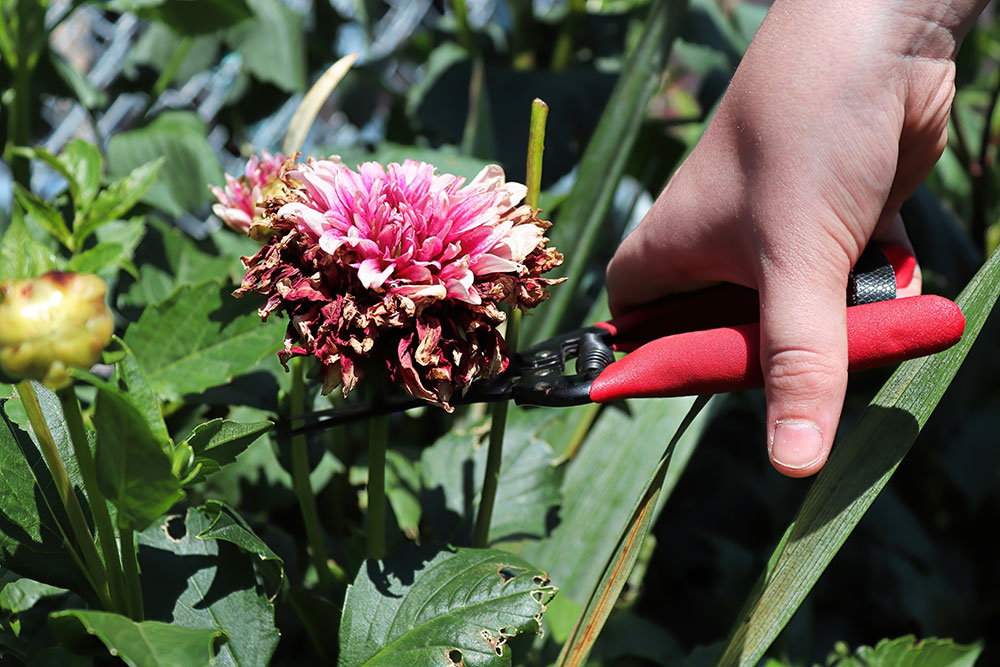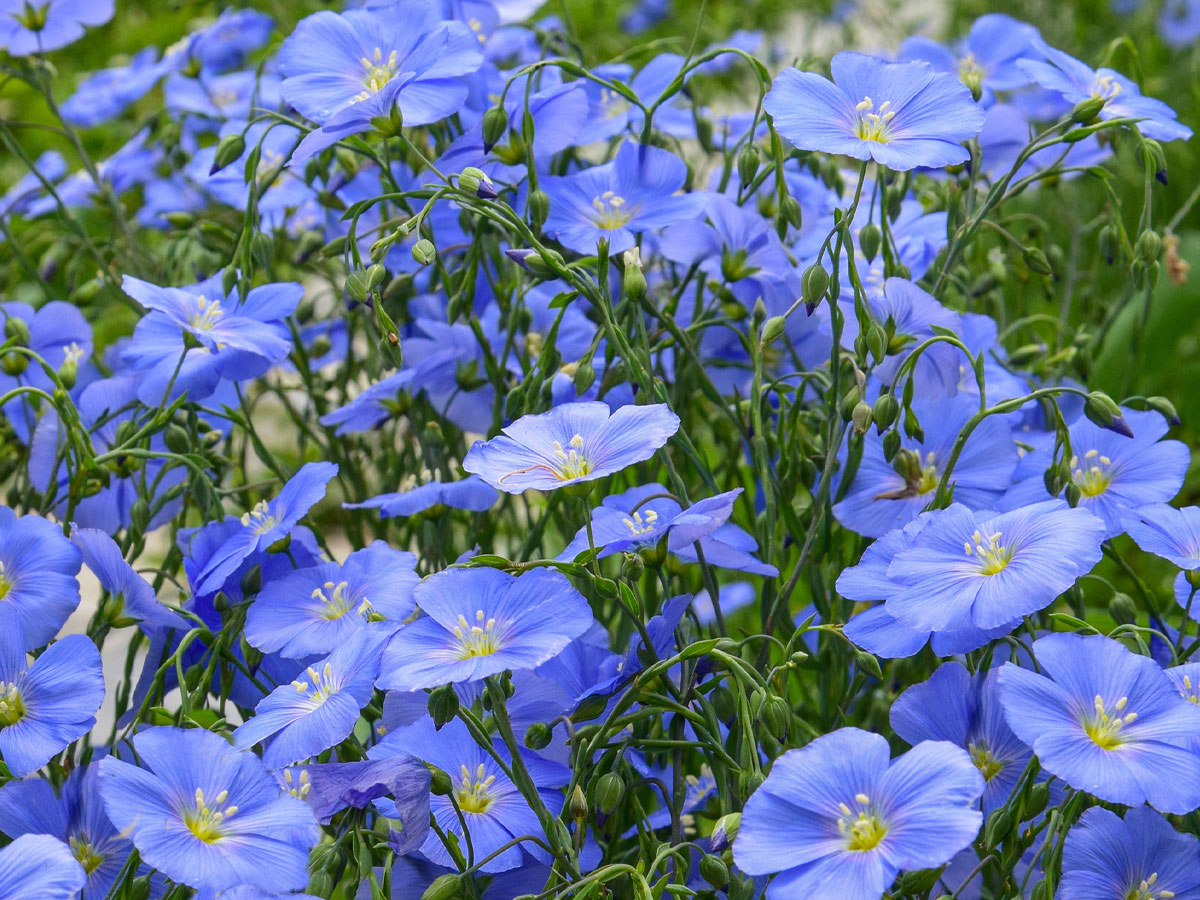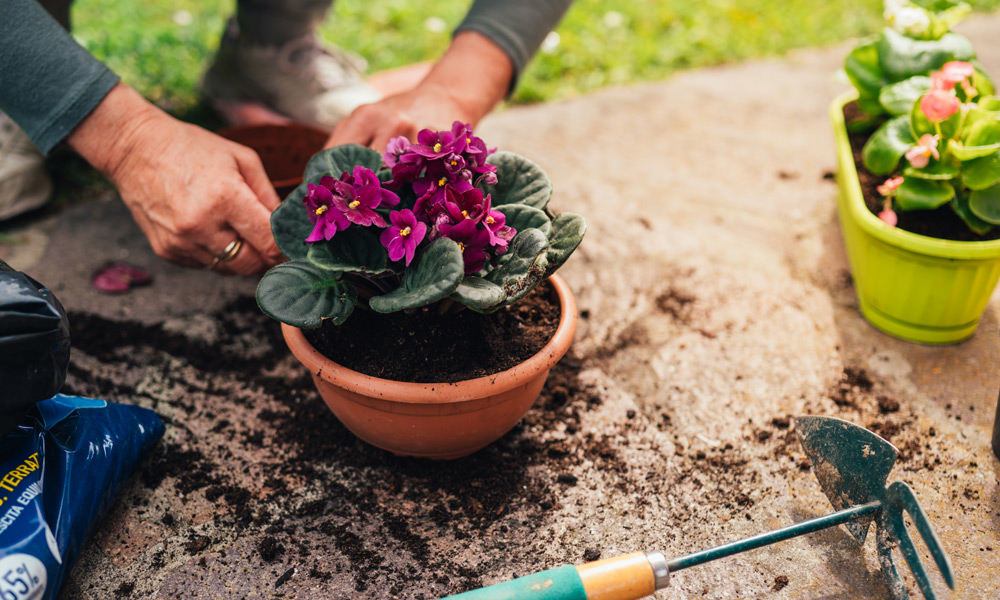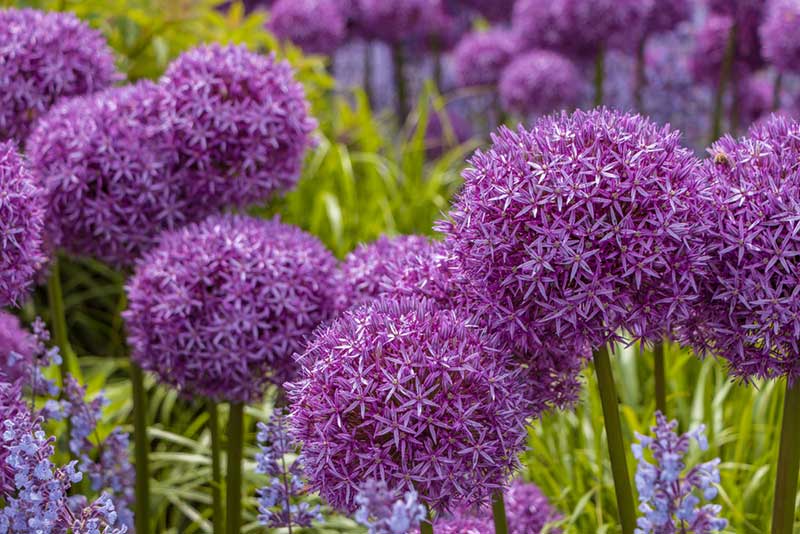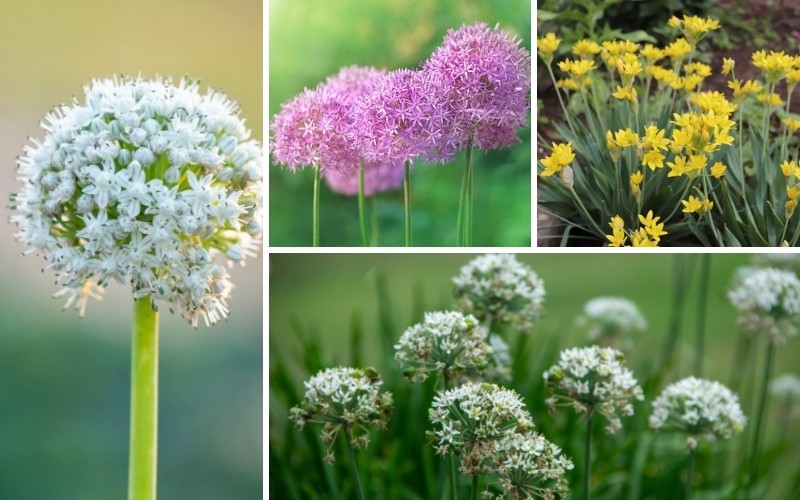
Onions, chives, and leeks are allium family members, but there are hundreds of others that are grown for their beautiful flowerheads.
Most of these plants have very little foliage, but their flowerheads are gorgeous. They must get enough moisture without becoming waterlogged as their bulbs will rot.
Allium is a sun-loving plant that works very well with many companion plants, including delicate flowers, like the catmint, because of the beautiful contrast it creates.
Some varieties will colonize and spread very slowly.
Purple Sensation Allium
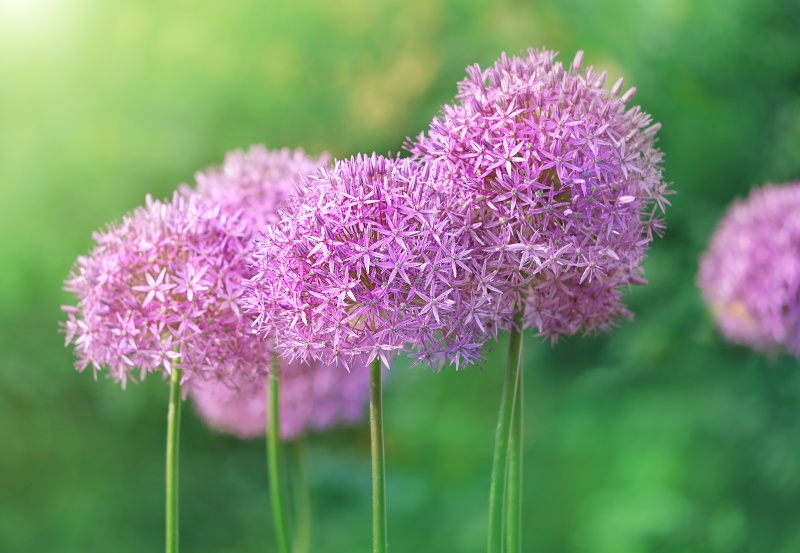
Purple sensation allium grows to be about 30-inches tall. Its bright purple flowerhead is global, measuring about 4.5-inches across. This option needs well-drained soil, so if your soil has some clay, be sure to mix in some sand before planting. You should plant its bulbs in the fall. It produces a clump of grass-like leaves with a naked stalk growing out of its middle.
Round-headed Leek
You will love watching the changes of the round-headed leek. It first produces a clump of grass-like green leaves. Then, several tall naked shoots will emerge from the leaves. Next, it will put on an egg-shaped flowerhead consisting of hundreds of tiny green flowers. By mid-summer, the flowers will turn purple. While this option has no smell while blooming, it often puts on onion-smelling bulbils in the fall. Be sure to pick the bulbils off the plant as they dry if you do not want this option spreading prolifically.
Garlic Chives
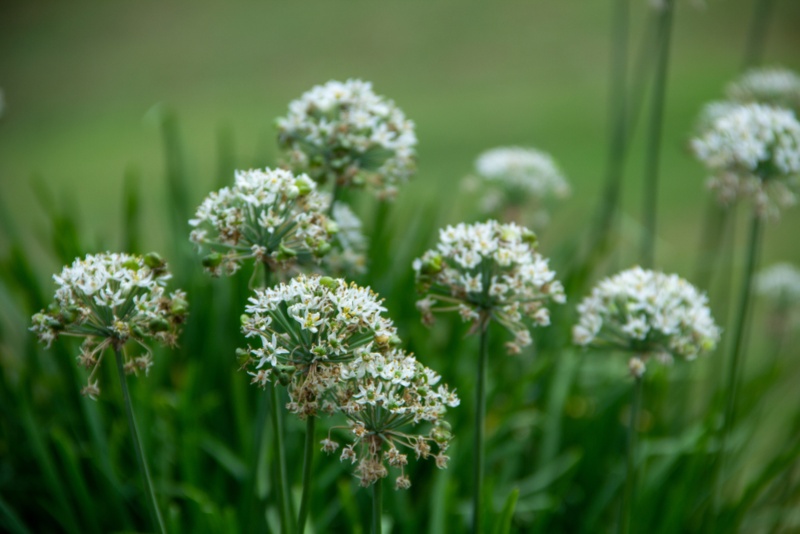
The garlic chives plant produces white leaves with brown stripes that are up to 12-inches long. Umbels up to 2-inches wide grow in late summer and early fall. These umbels consist of many tiny, star-shaped, white flowers that grow on top of an 18-inch leafless stem. Chefs use the leaves of this sun-loving plant in Chinese cooking, and they can be used in any recipe calling for chives.
German Garlic
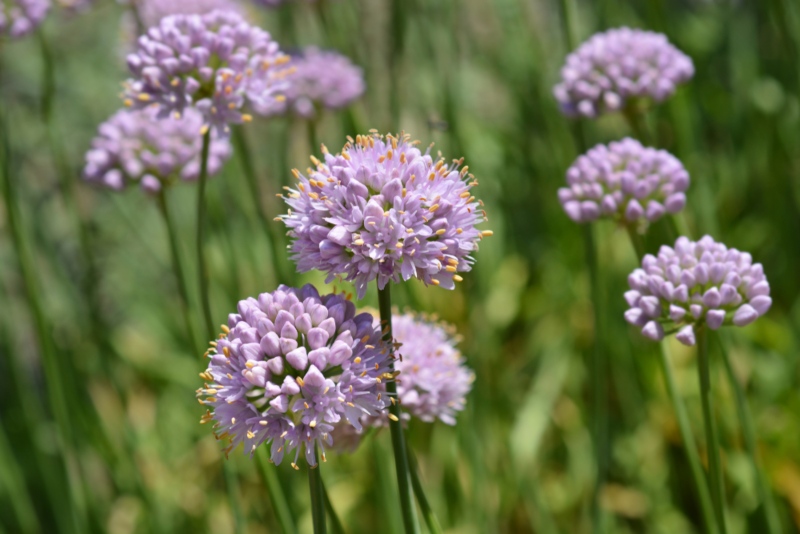
German garlic grows to be about 12 inches in sandy soil that receives more than six hours of sun daily. Each plant produces about seven leaves that have a strong onion odor if bruised or crushed. This plant grows a single umbel that is about 1.25 inches in diameter. Pinkish-to-purple-pinkish flowers on short green stems fill the umbel during the mid and late summer. This plant that grows from a bulb can easily be lifted and moved in the fall.
Nodding Wild Onion
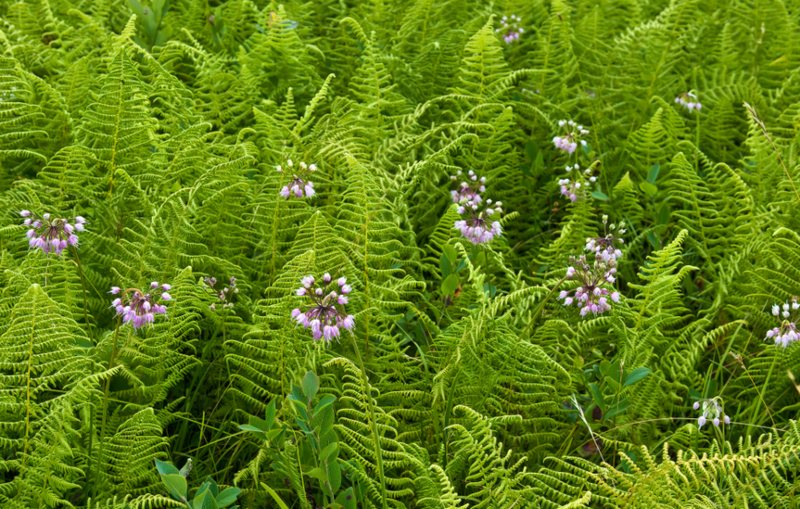
If you have a rocky area, then nodding wild onion may be the perfect choice for you. This Missouri native plant produces a grass-like clump of leaves. Each stem can be up to 12-inches tall. The leafless scape on this option bends downward at its top. Loose, nodding flowers with a bell shape appear on the end of the scape in an extremely loose umbel. These pink-to-lilac flowers appear in the late summer. You will occasionally find white flowers on this option.
Blue Globe Onion
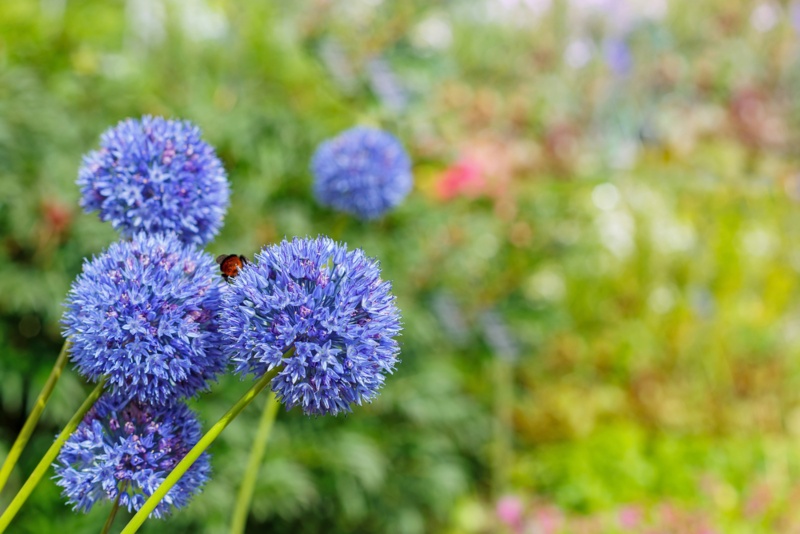
The blue globe onion produces many light blue star-shaped flowers in the late spring and early summer on scape that can grow up to 24-inches tall. Each scape has tiny green leaves in the early spring, but they typically disappear before this flower blooms. This plant may spread very slowly over time, but it is generally grown from bulbs. This sun-loving choice is particularly subject to root rot, so be sure to plant it in well-drained soil.
Spring Onion
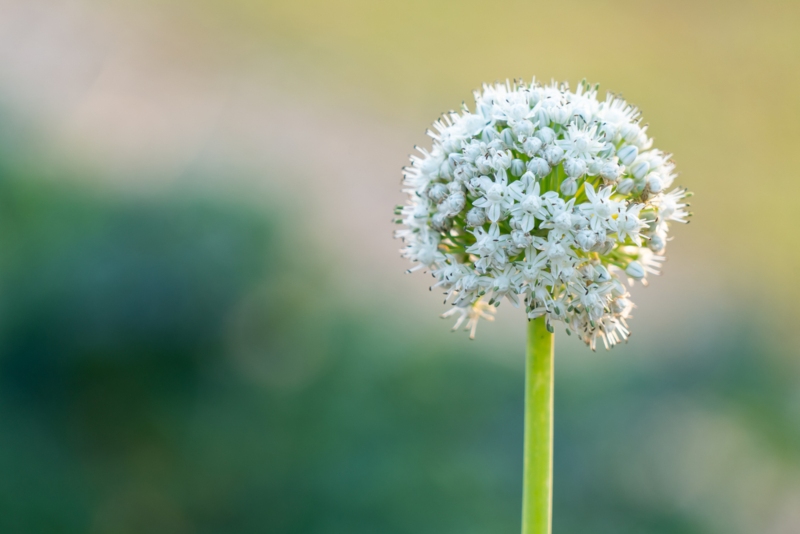
If you live in a warm climate, you can grow spring onion throughout the year, but it is grown as an annual in colder climates. Each blue-green stem on this plant grows to be about 30-inches tall and is hollow. In the late spring, each blade produces a globular terminal umbel that can be up to 3 inches in diameter. These umbels consist of 50 to 100 six-tepaled flowers that continue to bloom until late summer that are yellowish-green.
Tumbleweed Onion
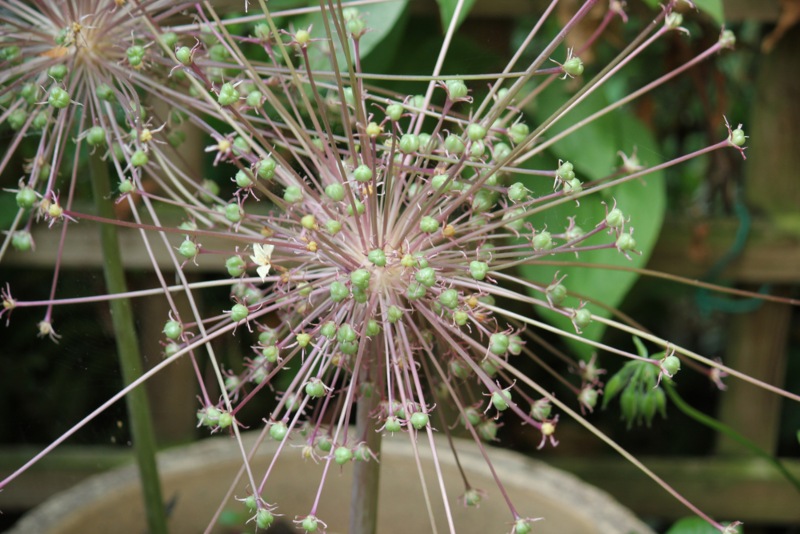
If you have a sunny, dry spot in your flowerbeds, consider planting tumbleweeds onions. In the early spring, this plant puts on blade-like leaves up to 16-inches long. Then, it grows a leafless stalk that can be up to 24-inches tall. On top of the stalk grows up to 50 rose-colored flowers that are star-shaped. These flowers appearing in late spring can vary in length from 4-to-8-inches long. While the flowers generally last for several weeks, they will eventually dry. Then, the flowerhead falls off the plant and scatters seeds as it blows across the ground. If you do not want this plant spreading, be sure to pick off the flowerheads.
Star of Persia
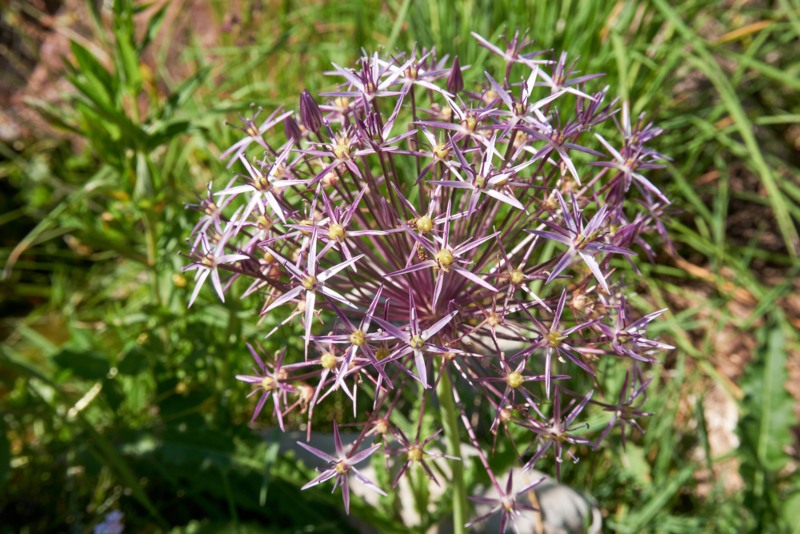
Star of Persia grows in sunny locations, and it prefers to be kept evenly moist. The basal leaves on this option can be up to 24-inches long and be up to 1-inch wide. The umbels on this option can be up to 12 inches in diameter. Tiny lilac-colored flowers fill them. After this option blooms in the spring, the flowerheads will dry and spread their seeds. If you do not want this option spreading, be sure to pick off the flowerheads, which you can use in ornamental bouquets.
Golden Garlic
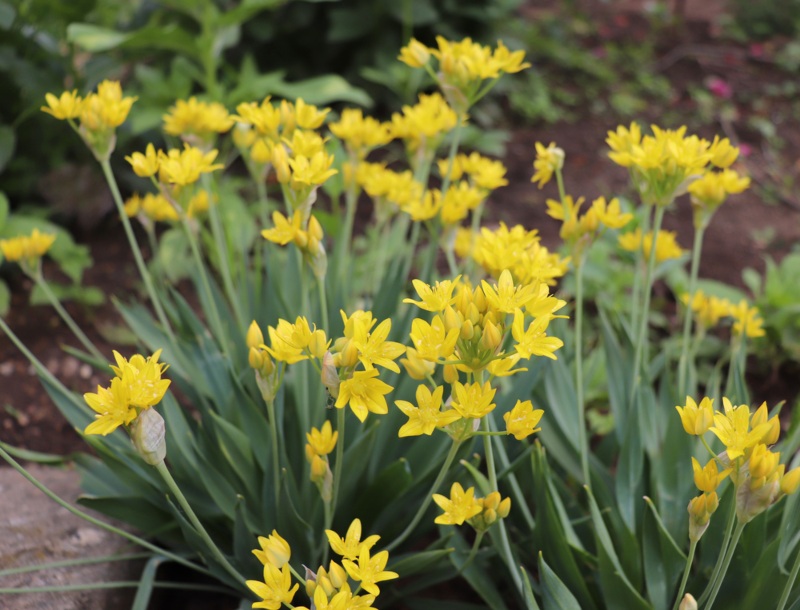
If you live in a hot climate, golden garlic loves protection from the afternoon sun. In other areas, plant this yellow option in well-drained soil in the full sun. It produces pairs of basil leaves that are up to 2-inches wide and 12-inches long. This plant that struggles to reach 18-inches tall has yellow star-shaped flowers in loose clusters. Plant this option’s bulbs in the fall. It can also grow from seeds scattered by mature plants.

